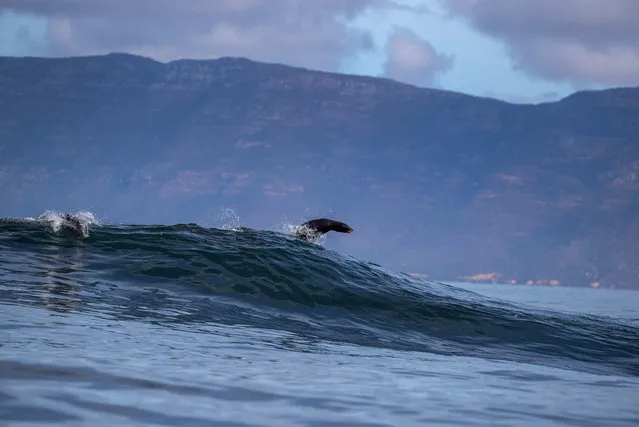
Cape fur seals (Arctocephalus pusillus) jump out of a wave breaking on Seal Island, an important feeding area for white sharks, in False Bay, Cape Town, South Africa, 05 May 2020. An ecological survey of False Bay revealed an abundance of marine life with a large variety of species active there. Scientists studied the effects that the ongoing pandemic of the COVID-19 disease caused by the SARS-CoV-2 coronavirus and related lockdown measures may have had on this coastal ecosystem. Initial findings indicated improved air quality in the bay and a proliferation of fish activities near the surface. Species observed included Bryde's whales, Cape fur seals, octopuses, hammerhead sharks, southern giant petrels, African penguins and cormorants. Located on the country's Atlantic coast, False Bay extends between the Hottentots Holland Mountains and Cape Point, in the far southwest of South Africa. (Photo by Nic Bothma/EPA/EFE)
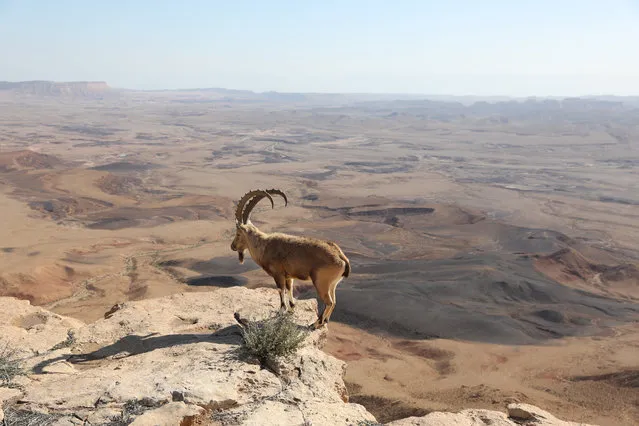
A Nubian ibex goat climbs at the Ramon Crater in Mitzpe Ramon, southern Israel, 25 January 2020. The Ramon Crater is one of Israel's major tourism attraction. (Photo by Abir Sultan/EPA/EFE)
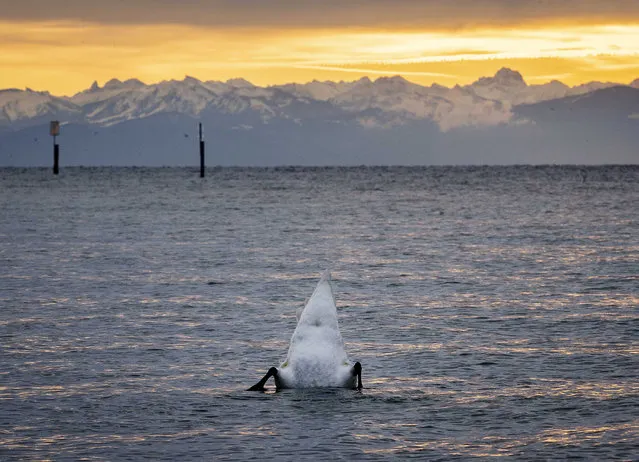
A swan dives in Lake Constance with the Swiss Alps in the background before sunrise in Constance, Germany, Thursday, November 14, 2019. (Photo by Michael Probst/AP Photo)
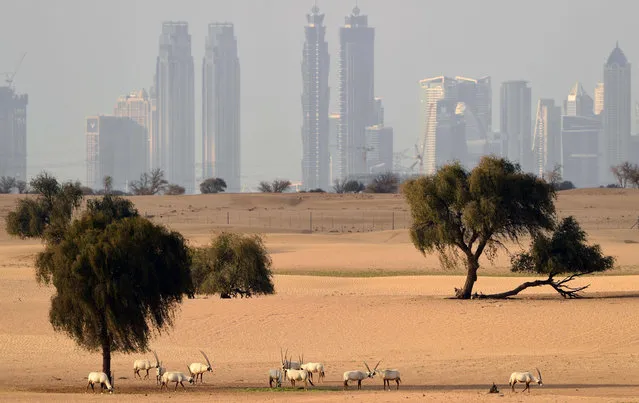
Arabian Oryx are pictured in the desert backdropped by a view of the city of Dubai in the United Arab Emirates on March 25, 2020. (Photo by Karim Sahib/AFP Photo)
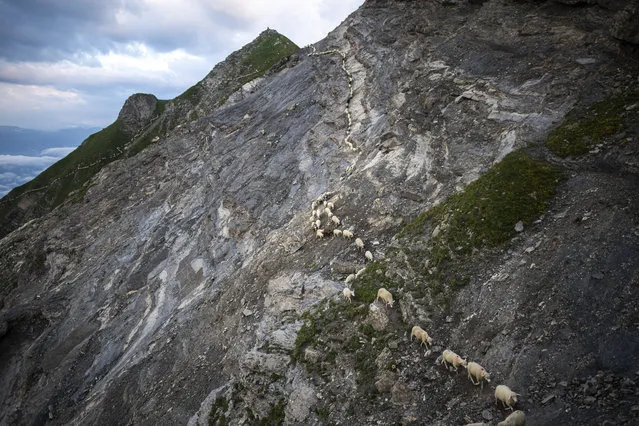
A flock of sheep crosses alpine terrain in Flaesch, Switzerland, Tuesday, August 6, 2019, under the “Falknis” peak (2562 meters above sea level). During the so-called “Schafuebergang”, 1500 sheep wander from one meadow to the other, crossing on a steep, narrow alpine trail. (Photo by Gian Ehrenzeller/Keystone via AP Photo)
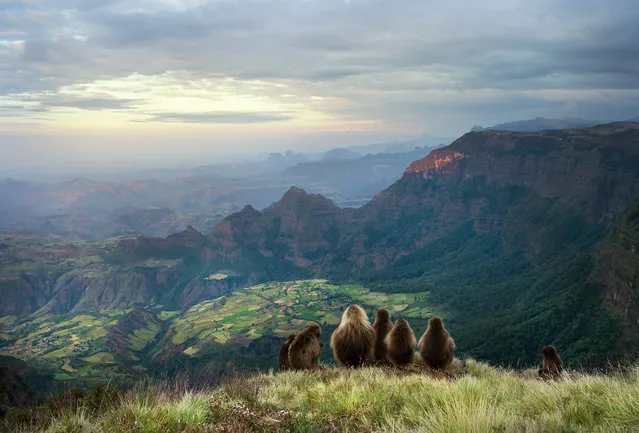
Gelada monkeys watch as the sun sets over the Simien Mountains, Ethiopia. A third of plant species in Africa are threatened with extinction, a study says. Ethiopia, west Africa, central Tanzania, and southern Democratic Republic of the Congo have a worryingly high proportion (40%) of potentially threatened species. (Photo by Giedrius Stakauskas/Golden Turtle/Bav Media)

Wild horses at a wild animal park on southern foot of Tianshan Mountain in China’s north-west Xinjiang region. More than 700 Przewalski’s horses have been born in Xinjiang since a breeding programme started in 1985. (Photo by Xinhua News Agency/Barcroft Media)
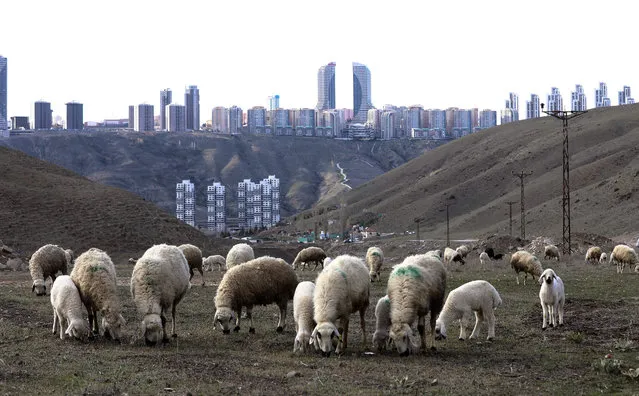
Sheep graze in the fields on the outskirts of the Turkish capital of Ankara's Cankaya district on April 9, 2020, as apartment blocks are constructed to accommodate the growing urban population. (Photo by Adem Altan/AFP Photo)
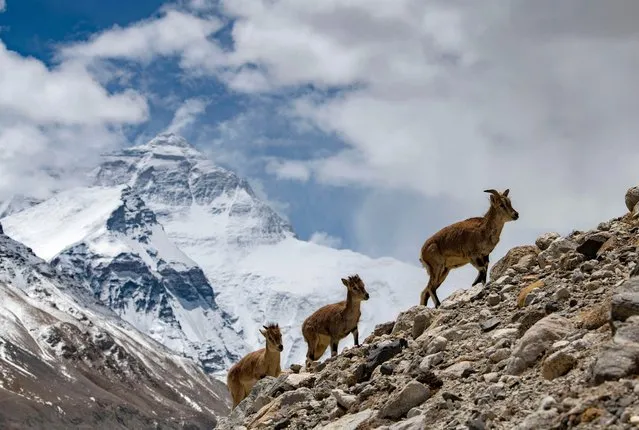
Blue sheep are seen in Mount Qomolangma National Nature Reserve in southwest China's Tibet Autonomous Region on April 29, 2020. (Photo by Purbu Zhaxi/Xinhua News Agency)
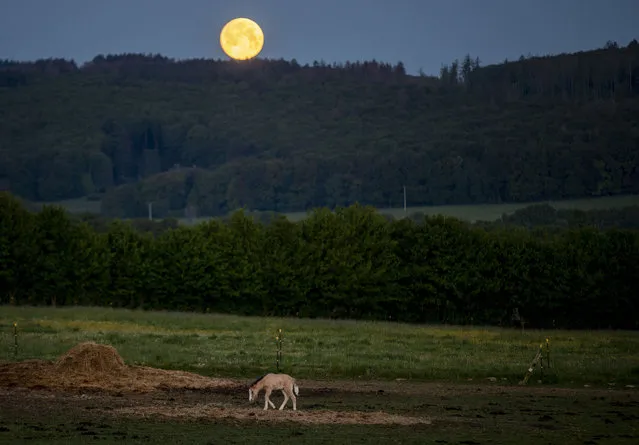
A foal stands in its paddock at a stud farm in Wehrheim near Frankfurt, Germany, as the full moon sets Thursday, May 7, 2020. (Photo by Michael Probst/AP Photo)
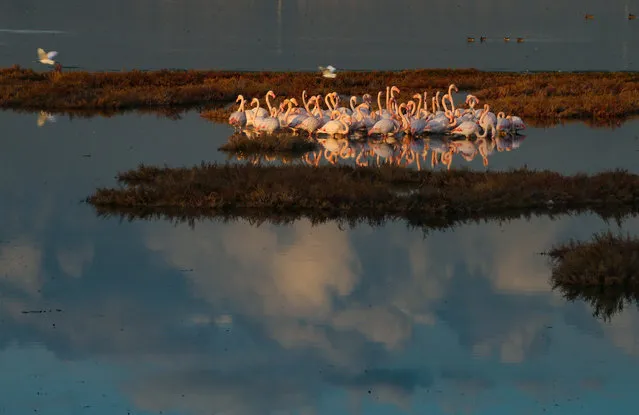
A photo shows flamingos on Cakalburnu Lagoon, located in the Inciralti coast of Izmir, Turkey on December 13, 2019. Cakalburnu Lagoon, a coastal wetland on the southern side of the Bay of Izmir, has become the house of flamingos, drawing attention with their pink and white looks. The flamingos, living in mass, generate a beautiful view at the lagoon, which hosts many bird species especially in cold weather due to its wind-protected structure. (Photo by Emin Menguarslan/Anadolu Agency via Getty Images)
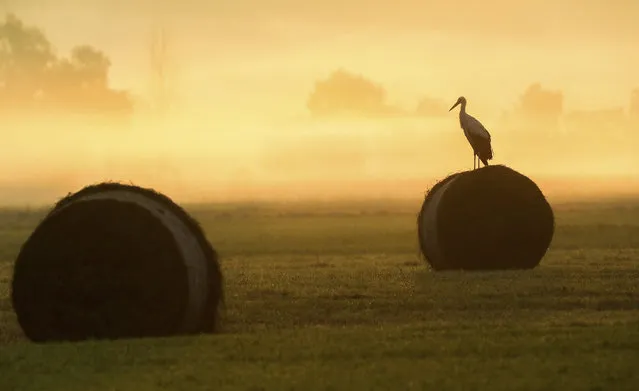
A stork sits on a hay ball on a field in Bechingen, southern Germany, Thursday, June 27, 2019. (Photo by Thomas Warnack/dpa via AP Photo)
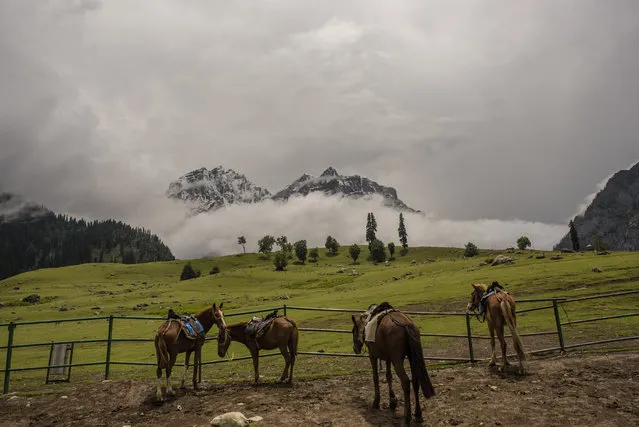
onies tied to fence as fresh snow covers the Thajiwas glacier, on July 9, 2019 in Sonamarg, 96 km (59 miles) east of Srinagar the summer capital of Indian administered Kashmir, India. Thajiwas, known as “The Valley of Glaciers”, is fast receding. Due to global warming Himalayan glaciers in Kashmir are melting fast. The glaciers are headwaters for Asia's nine largest rivers and are crucial for the 1.3 billion people of the South Asian region. The melting glaciers could endanger lives of millions of people. Aside from global warming, increasing human activity in higher areas is also responsible for the disappearance of the glaciers. Due to a high rate of ablation and heat produced by increasing numbers of tourists, nomads, herdsmen, school excursions and campers the glacier is visibly retracting. The Jammu and Kashmir Government is making a big effort to promote tourism but the result has serious implications for the eco-system. (Photo by Yawar Nazir/Getty Images)
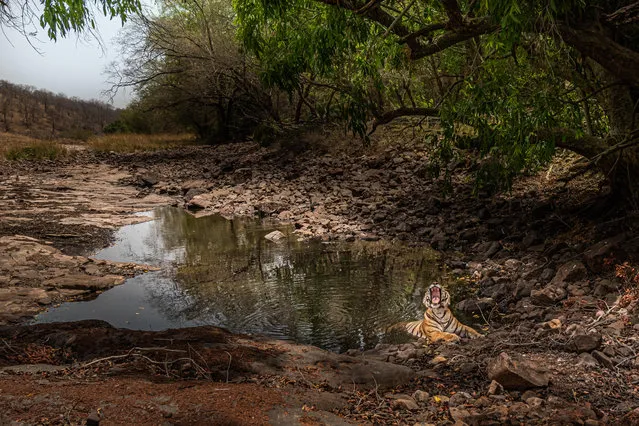
A tiger cooling in water in Ranthambore national park, India. India’s wild tiger population has increased by more than 30% in four years. (Photo by Nilesh Shah/Alamy Stock Photo)
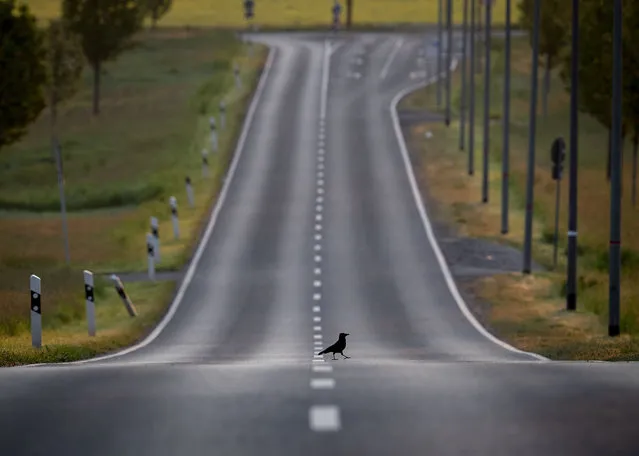
A crow walk over an empty road in Frankfurt, Germany, Tuesday, May 5, 2020. (Photo by Michael Probst/AP Photo)
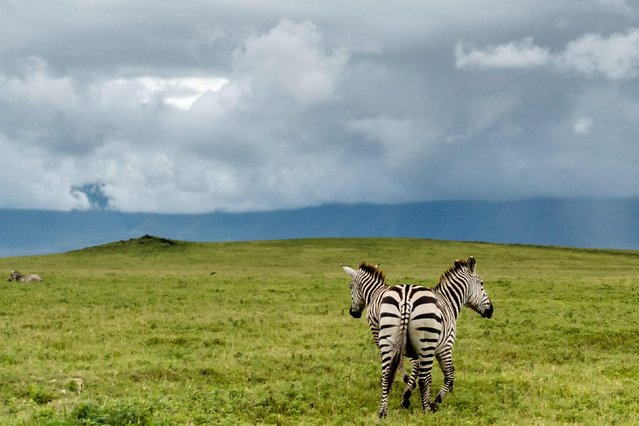
Two zebras stand so close in Ngorongoro Crater, Tanzania. (Photo by Zhayynn James/Solent News)
10 May 2020 00:01:00,
post received
0 comments
